
Picris (oxtongues) is a genus of flowering plants in the family Asteraceae described as a genus by Linnaeus in 1753.

Onopordum, or cottonthistle, is a genus of plants in the tribe Cardueae within the family Asteraceae. They are native to southern Europe, northern Africa, the Canary Islands, the Caucasus, and southwest and central Asia. They grow on disturbed land, roadsides, arable land and pastures.

Hyacinthoides is a genus of flowering plants in the family Asparagaceae, known as bluebells.

Santolina is a genus of plants in the chamomile tribe within the sunflower family, primarily from the western Mediterranean region.

Catananche is a genus of flowering plants in the family Asteraceae. It is native to dry meadows in the Mediterranean region.

Ptilostemon is a genus of plants in the tribe Cardueae within the family Asteraceae.
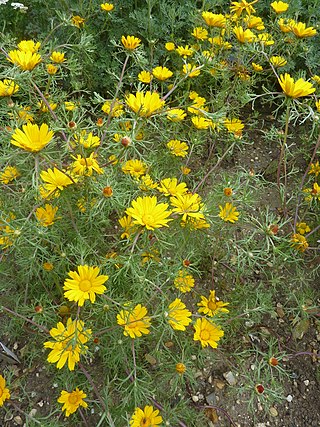
Cladanthus is a genus of plants in the sunflower family, native to the Mediterranean region.

Chamaemelum is a small genus of plants in the daisy family commonly known as chamomiles or dogfennels. Perhaps the best-known species is Roman chamomile, Chamaemelum nobile. These are annual or perennial herbs, rarely exceeding half a meter in height and usually bearing solitary white daisylike flowers with yellow centers. They are native to Europe but most species can be found scattered in other continents where they have been introduced. The genus consists of only two species and is of the Asteraceae family.

Helminthotheca echioides, known as bristlyoxtongue, is a sprawling annual or biennial herb native to Europe and North Africa. It was originally placed within the genus Picris but is often separated within the small genus Helminthotheca alongside a few other plants which also have the distinctive outer row of bracts around the flowerheads. It is a ruderal plant, found on waste ground and agricultural soils around the world, and in some places it is considered a troublesome weed.

Simethis is a genus of plants in the family Asphodelaceae, subfamily Hemerocallidoideae. It contains only one known species, Simethis mattiazzii, commonly called the Kerry lily.
Antinoria is a genus of Mediterranean plants in the grass family.
Castellia is a genus of African and Eurasian plants in the grass family. The only known species is Castellia tuberculosa, native to southern Europe, northern and northeastern Africa, and southwestern Asia.

Lygeum is a genus of Mediterranean plants in the grass family. It is placed in its own tribe Lygeeae, which is sister to Nardeae.
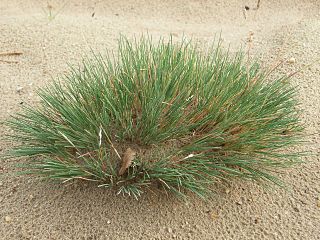
Corynephorus is a genus of European, North African, and Middle Eastern plants in the grass family.
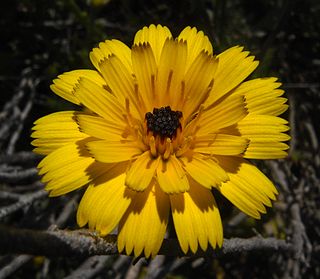
Tolpis is a genus of flowering plants in the tribe Cichorieae within the family Asteraceae. It is native to Africa, Southern Europe, the Middle East and Macaronesia. Many species are limited to the Canary Islands.
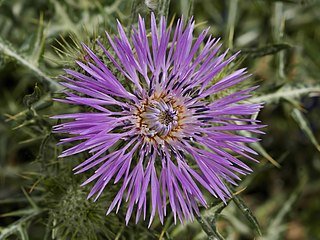
Galactites is a genus of flowering plants in the family Asteraceae. The name is derived from the Greek γάλα. The best-known species is Galactites tomentosus.
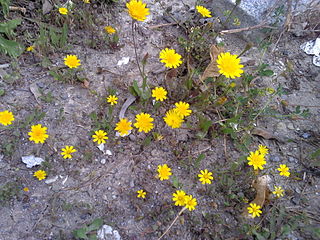
Glossopappus is a genus of flowering plants in the daisy family.
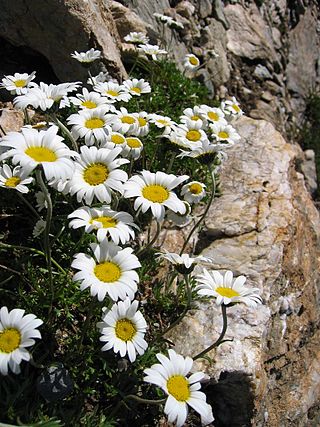
Leucanthemopsis is a genus of flowering plants in the daisy family.
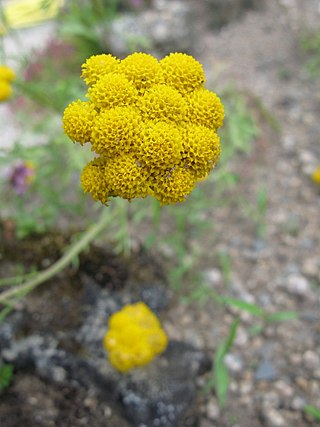
Lonas is a genus of flowering plants in the chamomile tribe within the daisy family. There is only one accepted species, Lonas annua, native to Italy, France, Germany, Algeria, Morocco, and Tunisia.

Coleostephus is a genus of flowering plants in the family Asteraceae.


















